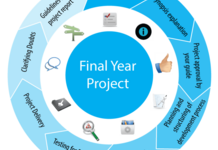CHAPTER ONE
Introduction
1.1 Background of the Project
Nepal is a developing country and Information Communication and technology are playing their important roles in development of the country. By ecommerce we mean œbuying and selling of products or services over electronic systems such as the Internet and other computer networks. In truth in Nepal we have very less ways to pay our bills online or trade online. But that does not mean we cannot. There are new players on Nepali ground like Paybill and Esewa who wants to revolutionize the way Nepali ecommerce field is taken. With launch of these services many new startups can easily sell their products and services online. These services have lots of potential and we hope it will succeed and bring a change in the Nepali ecommerce field. There are big and old player like muncha.com in Nepal which is already popular for its money transfer and online shops.
E-commerce is fast gaining ground as an accepted and used business paradigm. More and more business houses are implementing web sites providing functionality for performing commercial transactions over the web. It is reasonable to say that the process of shopping on the web is becoming commonplace.
The objective of this project is to develop a general-purpose e-commerce store where any product (such as books, CDs, computers, mobile phones, electronic items, and home appliances) can be bought from the comfort of home through the Internet. However, for implementation purposes, this paper will deal with an online book store.
An online store is a virtual store on the Internet where customers can browse the catalog and select products of interest. The selected items may be collected in a shopping cart. At checkout time, the items in the shopping cart will be presented as an order. At that time, more information will be needed to complete the transaction.
Usually, the customer will be asked to fill or select a billing address, a shipping address, a shipping option, and payment information such as credit card number. An e- mail notification is sent to the customer as soon as the order is placed.
1.2 Objective of Project
The objectives for this project are:
- Create a set of requirements for a Website CMS for small businesses based on research
- Build and test a prototype of a Website CMS for small businesses based on the requirements found
- Knowing when an item was saved or not saved in the shopping cart.
- Returning to different parts of the site after adding an item to the shopping cart.
- Easy scanning and selecting items in a list.
- Effective categorical organization of products.
- Simple navigation from home page to information and order links for specific products.
- Obvious shopping links or buttons.
- Minimal and effective security notifications or messages.
- Consistent layout of product information.
1.3 Limitations of the Project:
There are some limitations for the current system to which solutions can be provided as a future development:
- The system is not configured for multi- users at this time. The concept of transaction can be used to achieve this.
- The Website is not accessible to everyone. It can be deployed on a web server so that everybody who is connected to the Internet can use it.
- Credit Card validation is not done. Third party proprietary software can be used for validation check.
As for other future developments, the following can be done:
- The Administrator of the web site can be given more functionality, like looking at a specific customer’s profile, the books that have to be reordered, etc.
- Multiple Shopping carts can be allowed.
1.4 Selection Method of Data Collection
There are two major approaches to gathering information in our final year project about the situation, person, problems or phenomenon and software about e-shopping.
- Internal information
- External Information
This information was collected with the help of both primary and secondary resources.
- a) Primary Data: They are collected by us on the concern topic, which are original. While studying, we have come across with the sources such as
- b) Secondary Data: They are collected by us on the basis of the study of internet websites, interviews with friends, etc.






